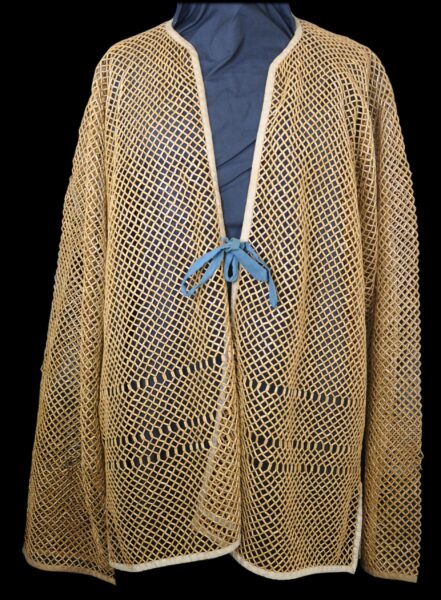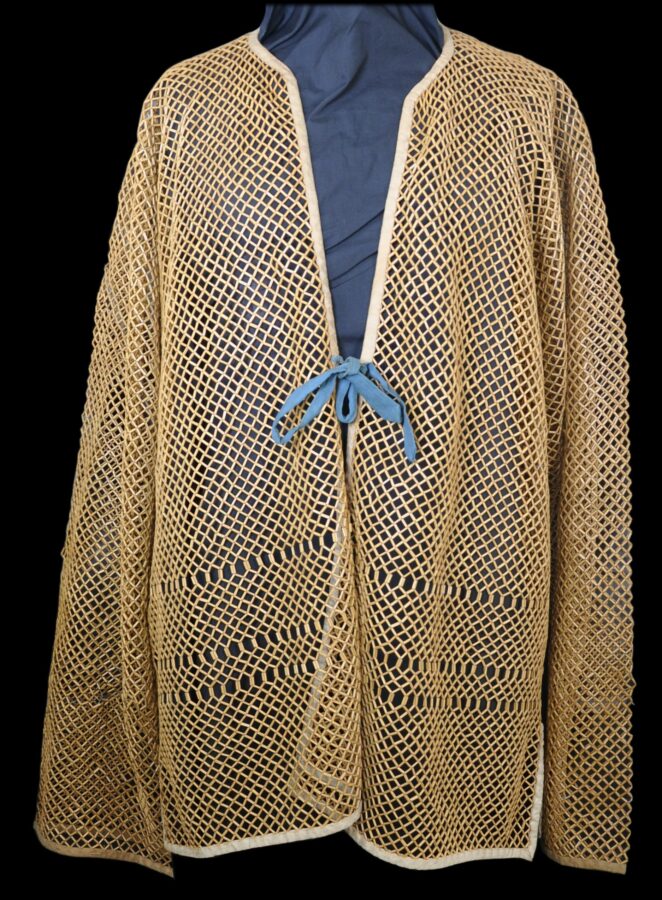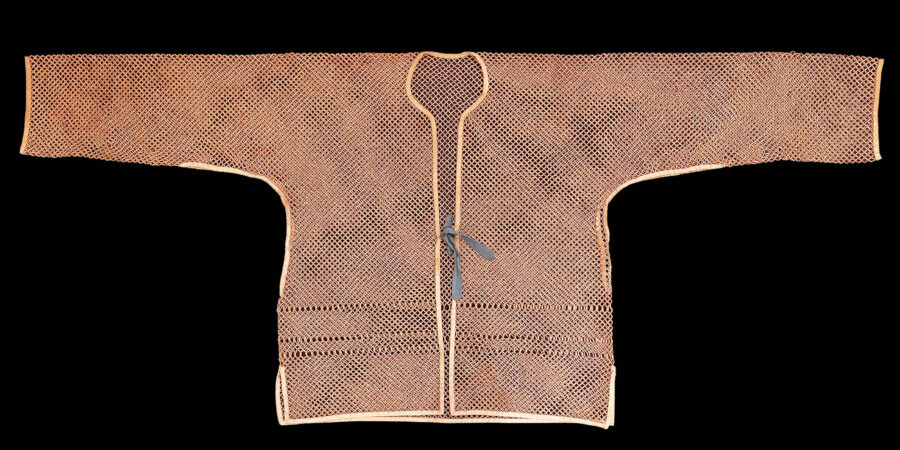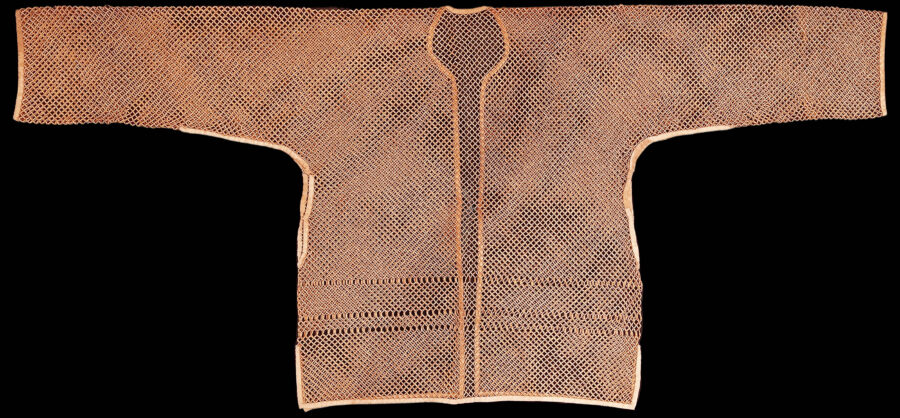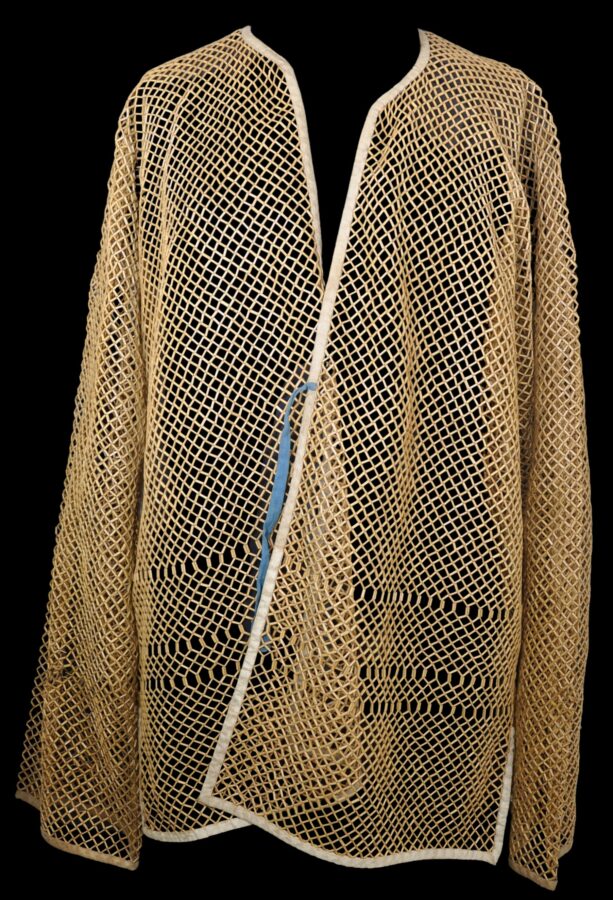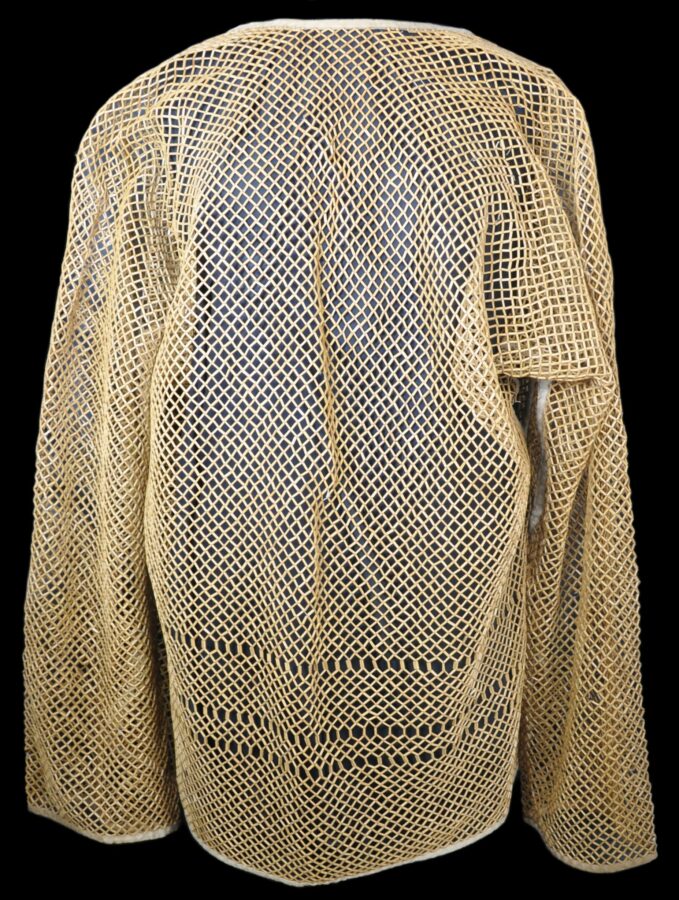This extraordinary vest is made of many hundreds of tiny tubular bamboo segments, each precisely cut and held in place with cotton thread that has been passed through the centre of each segment to construct the overall garment. The edging comprises woven cotton textile strips.
Such vests were worn by court officials in the Qing Dynasty beneath their elaborate silk robes to allow the air to circulate and to protect the robes from soiling by coming into contact with the skin.
This example is large and with full-length sleeves, and so almost certainly was made for a man. The underarms also include edged slits perhaps to serve as air vents or to enable great mobility of the arms.
The vest is closed by tying a ribbon at the front.
Such vests also were worn by the Straits Chinese (the babas and nonyas) of what is now Malaysia and Singapore under their elaborate and costly Qing-style wedding costumes for similar reasons.
Vests such as these are uncommon. One is in the collection of the National Museum of Singapore. Another is on display in the Chan House in Malacca, Malaysia – now the Baba Nyonya Heritage Museum.
The Singapore Museum example is published in Khoo (1996, p. 81) and again in Chee (1987).
Such vests were made in China, but it is also possible that similar examples were produced in Southeast Asia for the local Chinese community.
This example is in fine condition. There are losses to the bamboo here and there – minor holes in various places. But overall, the condition is fine and it is unusual to have an example that has full-length arms.
References
Chee, E. ‘The Straits Chinese Bridal Chamber’, Arts of Asia, May-June 1987.
Khoo J.E., The Straits Chinese: A Cultural History, The Pepin Press 1996.


